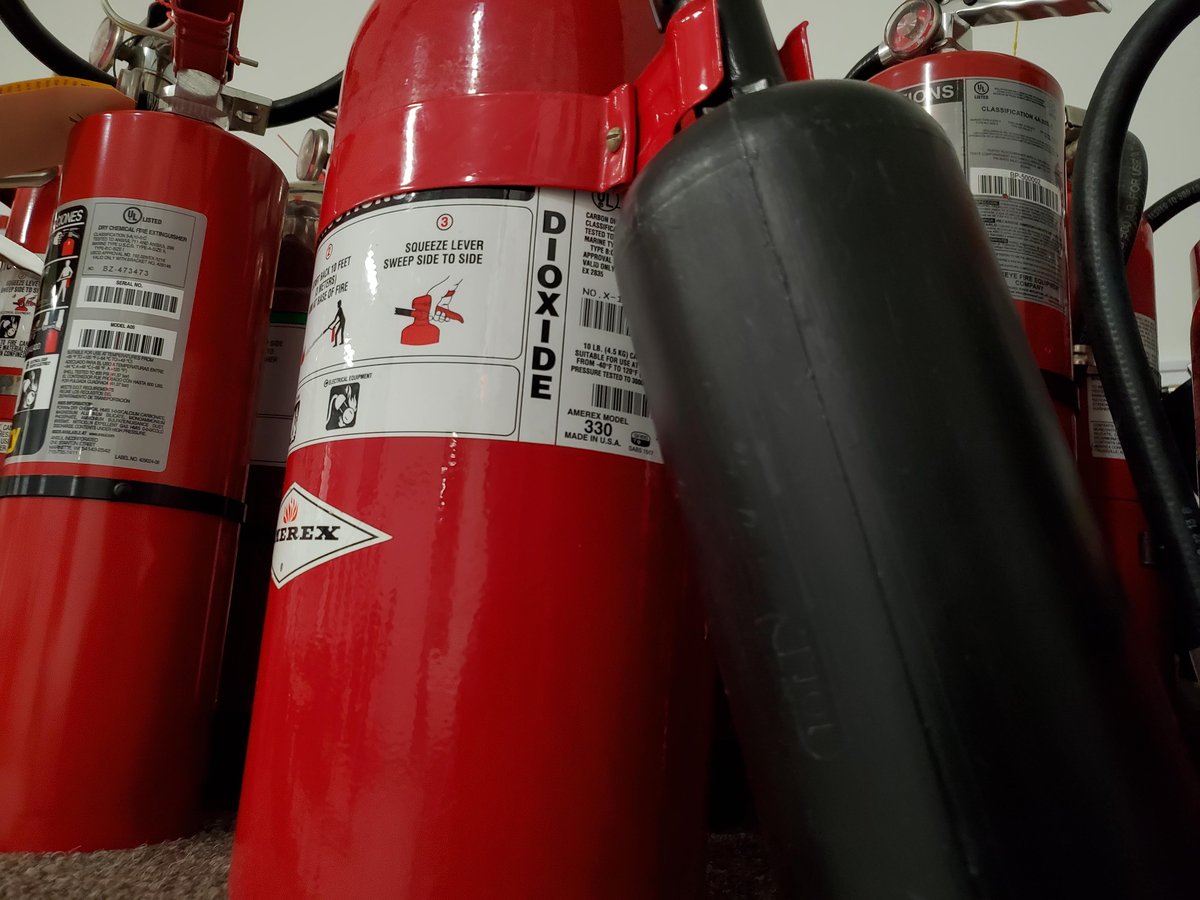
Knowing the different classifications of fire is important in understanding which type of fire extinguisher to use in an emergency situation. A carbon dioxide (CO2) fire extinguisher is typically used for Class B (flammable liquids and gases) and Class C (energized electrical) fires.
Carbon dioxide extinguishers are filled with non-flammable carbon dioxide gas. The CO2 fire extinguisher can be easily identified by its hard horn and lack of pressure gauge. The pressure in the extinguisher is so extreme that bits of dry ice may shoot out of the horn when discharged. Just like a typical ABC fire extinguisher, it is important to fire the CO2 extinguisher using the P.A.S.S. Method.
TOP 5 THINGS TO KNOW ABOUT CARBON DIOXIDE EXTINGUISHERS:
- CO2 fire extinguishers are designed for Class B liquid fires & safe to use on live electrical. Class B fires that can be extinguished with a carbon dioxide extinguisher include flammable liquids and gases, solvents, oil, greases (excluding cooking oils/greases), tars, oil-based paints and lacquers. Class C fires, which involve energized electrical equipment, can also be extinguished with CO2.
- CO2 displaces the oxygen to extinguish the fire. When the CO2 gas is released from the extinguisher it looks like dry ice. This “cloud” of CO2 reduces the oxygen in the air around the fire and smothers it. This type of extinguisher does not work well outside due to wind drift. The wind can blow the carbon dioxide off of the fire and bring oxygen back to the flames.
- The discharge range is fairly small. Once CO2 is released from the extinguisher, it will start to spread, as gases do. Because of this, the horizontal discharge range of the CO2 stream is limited to 3-10 feet. This range is about half the average range for an ABC extinguisher.
- They do not leave any residue after the fire is extinguished. Carbon dioxide cuts off the oxygen supply and brings down the temperature of the fire with its cold presence. Once the CO2 gas has extinguished the fire, it will dissipate into the atmosphere without leaving a trace. No residue typically means no damage. This is a big advantage for expensive electronic equipment, versus using a typical ABC extinguisher, which uses a powder that can be corrosive.
- Avoid contact between bare skin and dispensed CO2. It can cause frostbite! The carbon dioxide turns into dry ice when it is discharged from the extinguisher. The CO2 is extremely cold, which helps to cool down the flammable liquids or electronics if a fire were to occur. However, due to the extremely cold temperature of the carbon dioxide, avoid contact between the CO2 discharge and bare skin.
DO YOU HAVE THE CORRECT FIRE EXTINGUISHERS IN YOUR BUILDING?
Koorsen Fire & Security would be happy to send one of our fire extinguisher experts out to your facility to discuss the different types of fire extinguishers in more detail. It is important that your building is equipped with the proper fire extinguishers, and that your staff is prepared for how to handle a fire if one were to occur. Contact us today for assistance with finding the best fire extinguisher solution for your business and/or facility.



